You were recently invited to take up a residency as part of Poetry in Aldeburgh (2nd to 4th November 2018) along with poet and editor, Michael Brown. Had you been to Aldeburgh before?
I’d visited Aldeburgh once before in 2017. It was a half-day visit with my sister-in-law and baby niece. We played by the sea, bought fish for lunch and walked up and down the shingle beach. The enticing memory returned when I was asked about the residency, and I immediately bought an Ordnance Survey map and started to think again of the places I’d only passed through.
You are from Merseyside and well acquainted with the Lancashire Coast. What’s it like there?
Where I live in Crosby, just north of Liverpool city centre, the River Mersey merges with the Irish sea. From that position on the sandy Crosby beach, both sides of the river can be seen, the Wirral peninsula opposite, and, further in the distance, the Welsh hills – even Anglesey on a good day – but the sea is also visible with its to and fro of ferries, mostly to Ireland and the Isle of Man. The port has redeveloped for magnificent cruise liners and we recently had the return of the clippers from their Round the World trip. To the north is Formby point with its huge sand dunes and woodland, and on toward Morecambe, Fleetwood and Blackpool. Each section is busy and changeable in its own way. We have beautiful sunsets.
How does the Suffolk Coast differ?
It’s such a contrast being at Aldeburgh, and the differences fascinate me: the greater expanse of wide open sea I encountered in Suffolk, for instance, and the shingle beach. One of the aspects I loved was to wake early and spend time on the beach waiting for the sunrise. On the day I returned home, I went to the beach close to The Lookout at 4:30a.m. to watch the sunrise, and after the drive home, going coast to coast, I sat on Crosby beach at almost 10:00p.m to take in the sunset.
Although the beach and water have been cleaned up considerably at Crosby over the years I’ve lived here, it’s very rare to see people swim. There’s also the danger of sinking sands. It was lovely to see people swimming at Aldeburgh and I enjoyed the water especially after a run very much.
How did you work when you were there?
It takes time for me to move from one way of working / being to another, and I’ve been especially busy this year with exciting new teaching commitments and with the creation, development and sewing of Coast to Coast to Coast journals. Arriving at Aldeburgh for my first residency was exciting, but a bit scary too! I’ve a tendency to expect a lot of myself work wise, but Daphne’s advice was so welcome and wise – to take time to write, walk and read and not to feel too much pressure of intention. It was such a treat to remove a weight of expectation.
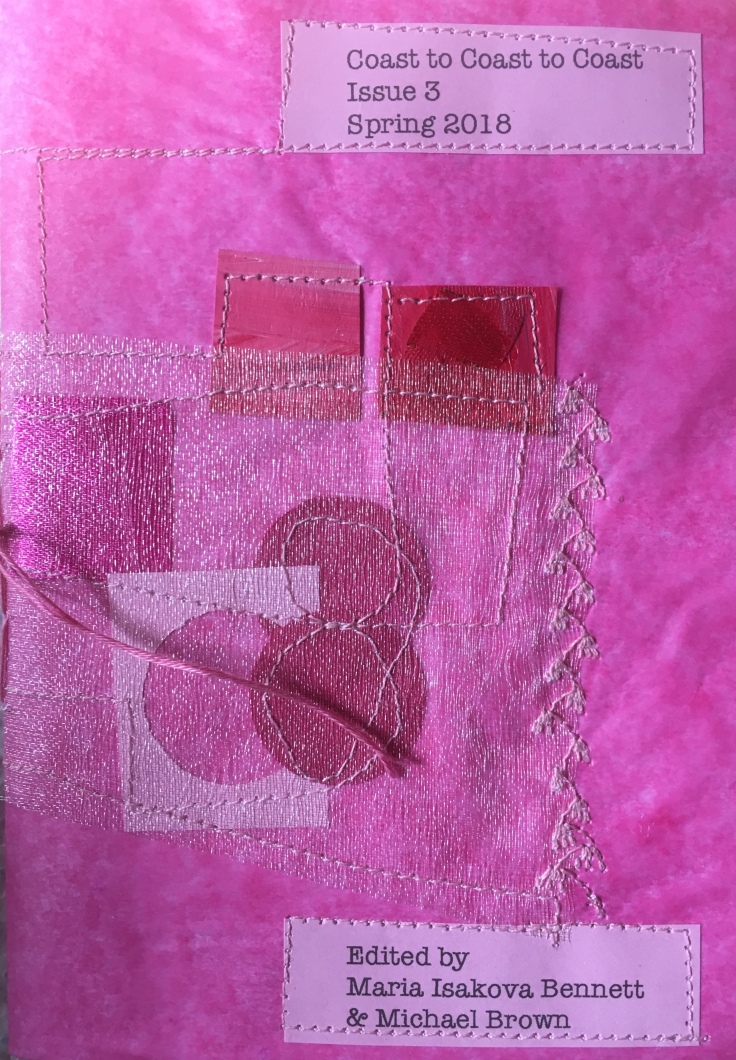
Did you develop a routine?
I filled a small notebook, (including making ‘sketches’ using stitch), read, walked, ran, went into the sea, took photographs. One book I spent time dipping into is called, On Not Knowing: How Artists Think, edited by Elizabeth Fisher and Rebecca Fortnum [introduction to book symposium here]. I feel sure that the experience of the residency is already bearing fruit. Ideas are bubbling up about the work for exhibition at The Lookout, collaboration, and poetry for Michael and I. We’ve been writing new work from prompts arising from my residency. A routine developed in that I felt able to let go of other work, and was able to get back to aspects of my own creativity. I felt excited by new ideas there. It was wonderful to write in the summer house and to move about the quiet space of the cottage any time of day or night.
Where did you find inspiration? Were there particular features of the beach or town that you were drawn to?
My last pamphlet focused, in particular, on ideas evoked by the modernist sculpture created by the late Lebanese artist Saloua Raouda Choucair. The concept of space is very important to me at present, and I was fascinated by Nigel Hall’s sculpture which Caroline Wiseman introduced me to – almost a cipher to express a wave, the abstract sculpture is perfect for a meditation on sea and space. These ideas merge with the work in my recent pamphlet and with on-going concerns. I was drawn to the expanse of the sea, but fascinated by the constraint when trying to write about something so often the focus of poetry, art and prose, and I took this constraint as an important part of my writing process: what do you do when you worry that you may have nothing to add to what’s been said, or nothing good enough?
I thought about ideas of turning my back on the sea and how the backdrop could itself be important. This started a train of thoughts around turning away from a main attraction and looking in the opposite direction, thoughts that linked with ideas of awareness. What I felt and thought about formed part of the notes I’ve been making for new work. Another theme that preoccupied me and continues to do so is that of resilience. I was thinking about this with reference to coastal plants— their survival and growth in shingle.
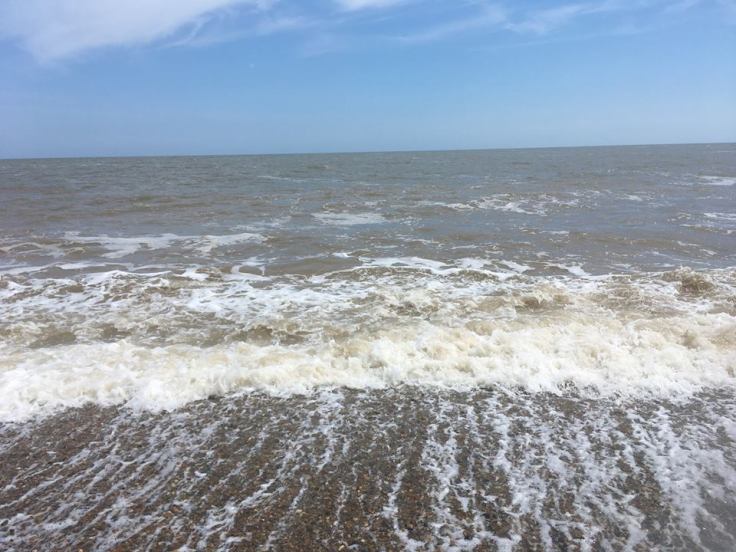
What did you make of The Lookout?
I visited The Lookout each day: viewing it from the beach, sitting close to it, running past late evening, and went inside twice – once to the top, visiting all floors, and a second time for a launch and exhibition where guests spilled out on to the beach. I felt that each of the floors of The Lookout fulfils a different aspect of creativity. Caroline Wiseman plans to have the Nigel Hall RA sculpture on view on the top floor as inspiration for writing – to me this is a wonderful place to encounter this intriguing abstract piece while surrounded by sky. The middle floor is a small space which Caroline suggested we can use for writing during our residency if we want a quieter space – I think this will be a perfect contrast to the busy space on the ground floor where we’ll have an exhibition both of collaborative pieces and our own individual work, and where Michel and I will work, write and discuss ideas with visitors. Resilience and turning away from attraction to find something even more sustaining and attractive promises to be rewarding in terms of creativity.
What type of work do you think you will produce? Will it be similar or different to the unique covers you sew for Coast to Coast to Coast, the poetry magazine you edit with Michael? Where can we see it?
The final pieces of work will be available as an exhibition on the ground floor of The Lookout between 2nd and 4th of November. I’m still developing the ideas. There will be poems written by Michael and I in response to the residency. Much of the work shown will involve stitch, and I’ve been particularly considering the work of Mira Schendel, an artist whose work and writings I’ve had a long term fascination with. The work will be a development of the art produced for the covers of Coast to Coast to Coast. I see those covers as a starting point. One of the pieces will be collaborative and link poets who’ve been published in the journal— for this work, I’m providing a prompt for all poets interested. I will work on this piece using stitch and a reference to the idea of the Ordnance Survey map. In this way, those who have been part of our project over this year have a chance to be present at Aldeburgh even if not physically.

Coast to Coast to Coast has attracted a huge following. Can you tell me a little bit about the genesis of the journal and how it has been evolving?
Thank you! I don’t know about huge but it has been a wonderful success given that the whole project is only a year old. Michael and I have been working together for four years. We’ve created poems and run workshops together in galleries across Merseyside and have a pamphlet of quite ekphrastic poems (shortlisted several times for publication and hopefully to be published before too long).
I’d been thinking about creating a poetry journal that was predominantly hand made for some time, and was particularly interested in using stitch based on my postgraduate work in Fine Art. I didn’t want to compete with journals already in existence and hoped that the project would become more than a poetry journal, but I didn’t have any particular plan aside from a desire to offer poets a place to have their work published and to hold launches in Liverpool. The idea title came from discussions between Michael and I when we had ideas about a writing trip: the North East coast to Liverpool to Dublin to Galway (coast to coast to coast [to coast]). We shortened the title to Coast to Coast to Coast!
It’s evolved in surprising ways which I find very heartening because we always saw the project as organic. We didn’t envisage but welcomed invitations to festivals this year and the poets involved in the project have become extremely important to Coast to Coast to Coast. A very special part of the year was creating a special Irish Issue and launching it at Belfast Book Festival. We look forward to creating further Special Issues. Something that started out as an idea for a journal has grown into a community of writers, opportunities to publish small, single poet hand-stitched pamphlets, and to be available for festivals.
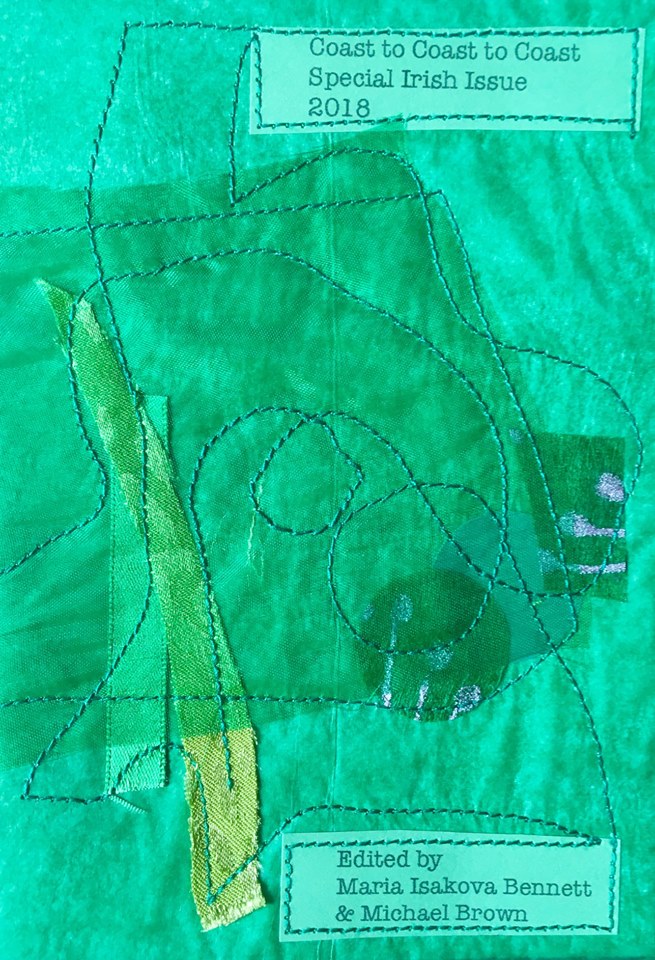
How will the collaboration work now in terms of going on to write new poems over the next few months?
I think we’ll work in a similar way to the way we worked previously: we pass ideas back and forth as drafts of poems. We are doing this in preparation for a sequence of poems now.
How will you be involved with the Poetry in Aldeburgh festival? What will you be doing there?
It was wonderful to be invited to be artist in residence, and for Michael and I to be asked to be poets-in-residence with reference to Coast to Coast to Coast. Many thanks to all the organisers. I’m looking forward to meeting and hearing lots of wonderful poets over the weekend. Much of our involvement is taking place these months before the event and involves being at The Lookout too, where we will continue to write and to add to what we’ve created. We have several slots at the festival: reading from our Eyewear pamphlets as part of an event with 2 other poets on the Saturday of the festival. Mine is called All of the Spaces and Michael’s is Undersong.
Also, Coast to Coast to Coast will be involved in a session on poetry and climate change with Magma. The poet and novelist Rebecca Gethin and poet and publisher MW Bewick will represent us at this event. Both Rebecca and Martin have had work published in Coast to Coast to Coast, and Rebecca is one of two poets (with Jane Lovell) who have single poet journals to be published by us this year. Michael and I will run a poetry workshop [which will also involve stitch and maps (suitable for those with NO sewing experience!)]. And of course, throughout Poetry in Aldeburgh, work (art and poetry) developed from the residency will be exhibited in The Lookout.
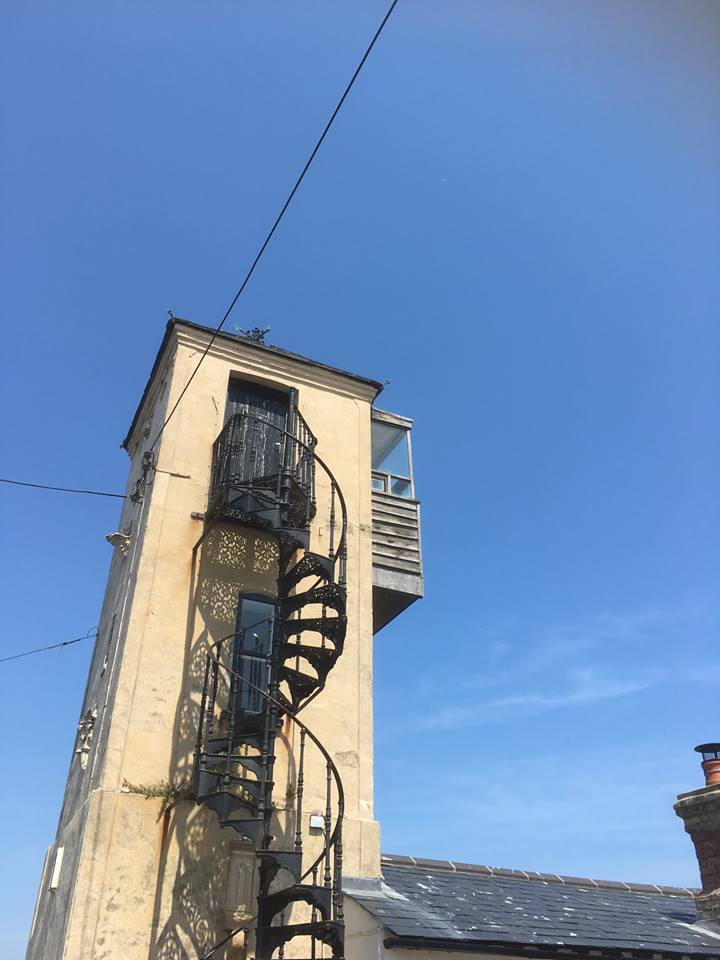
How and where can people read your and Michael’s work?
Here are a few links below both for Coast to Coast to Coast and our own work.
http://www.mariaisakova.com/coast-to-coast-to-coast-journal/
http://sentinelquarterly.com/2018/02/grave-marker-whitby-abbey-poem-by-michael-brown/
http://munsterlit.ie/Southword/Issues/32/brown_michael.html
https://andotherpoems.com/2015/06/30/two-poems-by-michael-brown/
http://humag.co/authors/maria-isakova-bennett
http://www.themanchesterreview.co.uk/?p=4742
https://www.poetrybooks.co.uk/products/all-of-the-spaces-by-maria-isakova-bennett
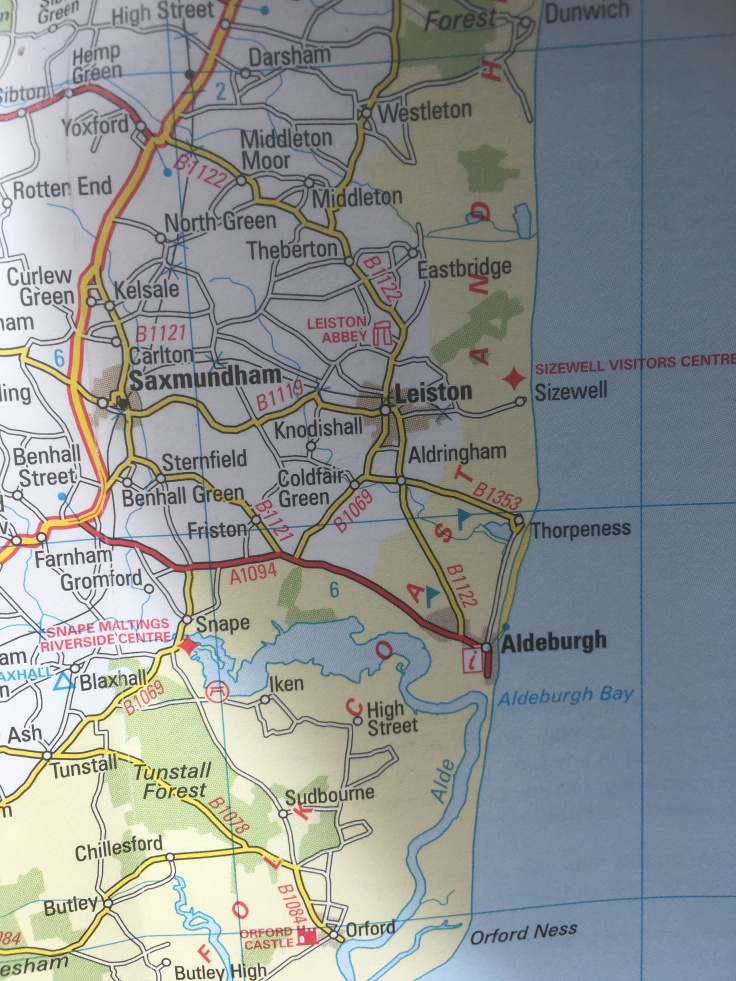
[To get to Aldeburgh, take the train from London Liverpool Street or Cambridge to Ipswich (1 hour 15 mins) and then change for the line to Saxmundham (36 minutes). Journey time two hours. From Saxmundham there are taxis and buses to Aldeburgh 7 miles away on the coast. With taxis, it’s advisable to ring in advance so a car is waiting]
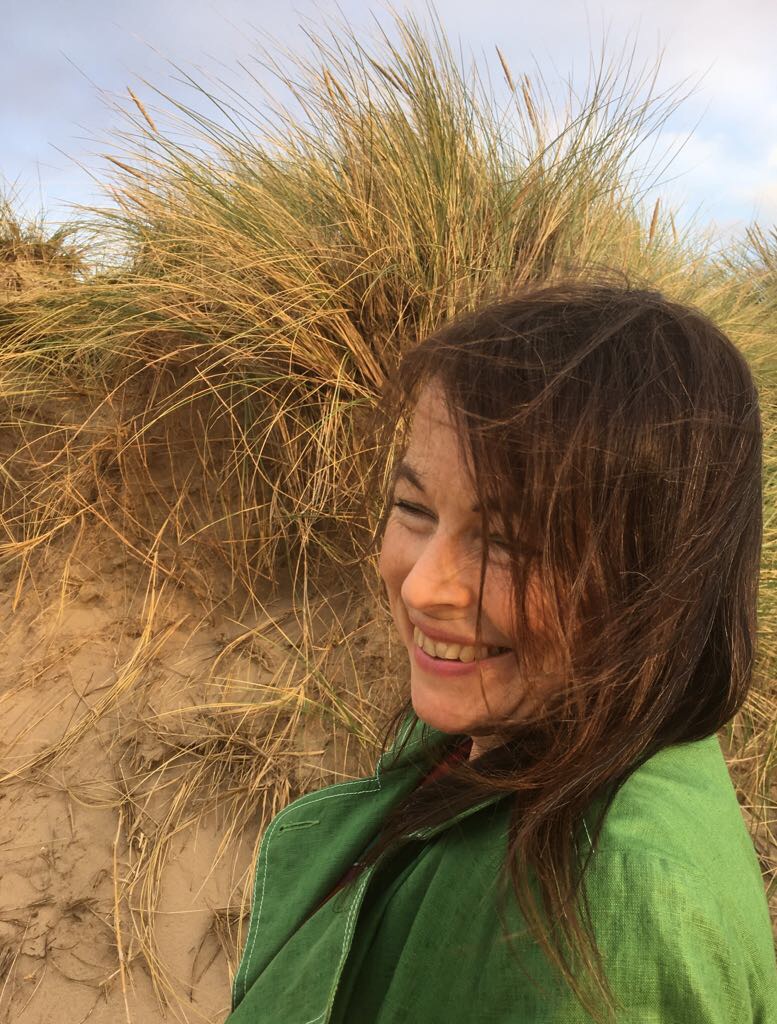







It was a pleasure to encounter you at the recent Poetry Society book fair on Saturday 22nd Sept!
You have a lovely blog. Maria’s books really did have an unusual, unexpected quality. Your interview made an enchanting read and I also really enjoyed your interview with Niall Campbell.
Your identification with France and French authors also strikes a chord deep within.
I shall enjoy going back to finish my reading of other poets later. I could not send the email given, hence the comments here. Please feel free to explore my site which includes experimental poetry performance on annegaelan16.blog/.
This has suddenly popped up in my inbox Paul,and I love the idea of a stitched journal. It sounds a fascinating project. I will follow the links. Have only twice got to the coast this year apart from my February trip to Spain. In the thick of interviews for a new edition of Just One Street- Ten Years On. Elizabeth
Sent from my iPad
Sent from my iPad >